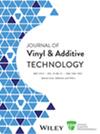Enhancing mechanical properties of PLA-based bio composite filament reinforced with horse gram filler for 3D printing applications
Abstract
Green composites for 3D printing have gained significant attention due to the potential of incorporating natural fillers to reduce costs and enhance performance while maintaining environmental benefits. The use of agricultural by-products, such as horse gram (Hg), not only promotes waste utilization but also seeks to improve the mechanical properties of biopolymers like PLA. In this study, Hg powder was utilized as a natural filler to enhance the mechanical properties of PLA-based composites. The composites were fabricated with 1%, 2%, 3%, and 4% Hg powder filler content, and the filament was processed through a single screw extruder machine. Their mechanical properties were systematically evaluated to determine the optimal filler ratio. The results indicate that the incorporation of 1% Hg filler into PLA provided superior mechanical performance compared to Neat PLA. Specifically, tensile strength increased by 11.19%, flexural strength improved by 5.32%, and compression strength increased by 5.94%. In contrast, composites with 2% and 3% Hg filler showed a reduction in these mechanical properties, highlighting that the 1% Hg/PLA composite achieves the best balance between strength and filler content. The findings suggest that the 1% Hg/PLA composite offers an optimized combination of tensile, flexural, and compression properties, making it a strong candidate for environmentally sustainable engineering applications such as lightweight structural components, automotive interior parts, and consumer product casings.
Highlights
- One percent Hg filler improved tensile, flexural strength, and hardness through uniform dispersion.
- Higher filler content (3%–4%) led to agglomeration, reducing composite performance.
- XRD and SEM analyses revealed reduced PLA crystallinity and structural defects at higher filler levels.




 求助内容:
求助内容: 应助结果提醒方式:
应助结果提醒方式:


